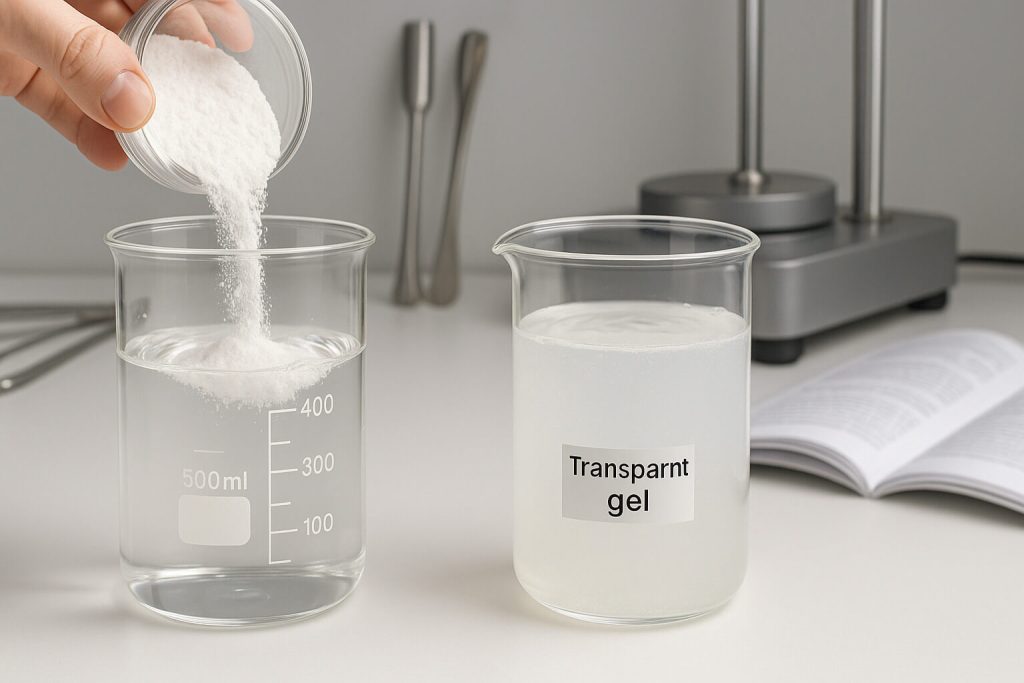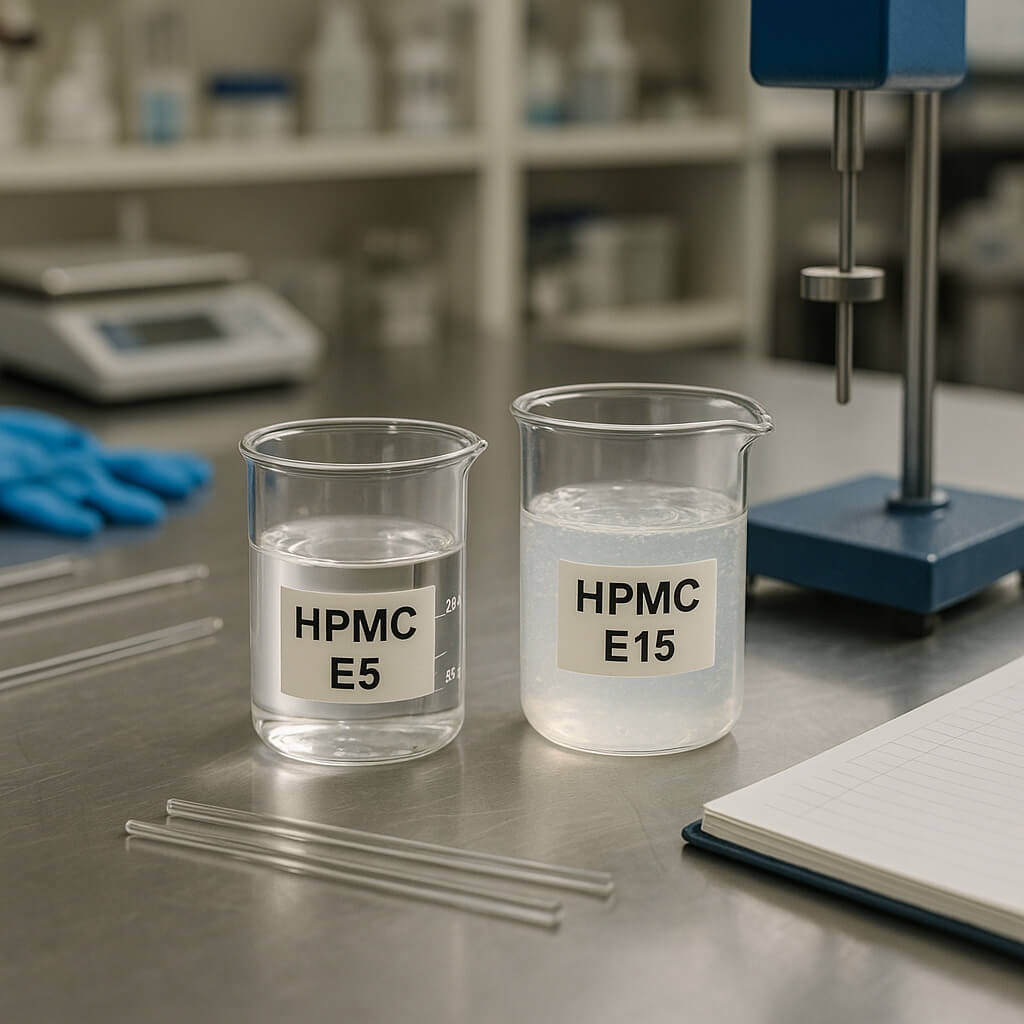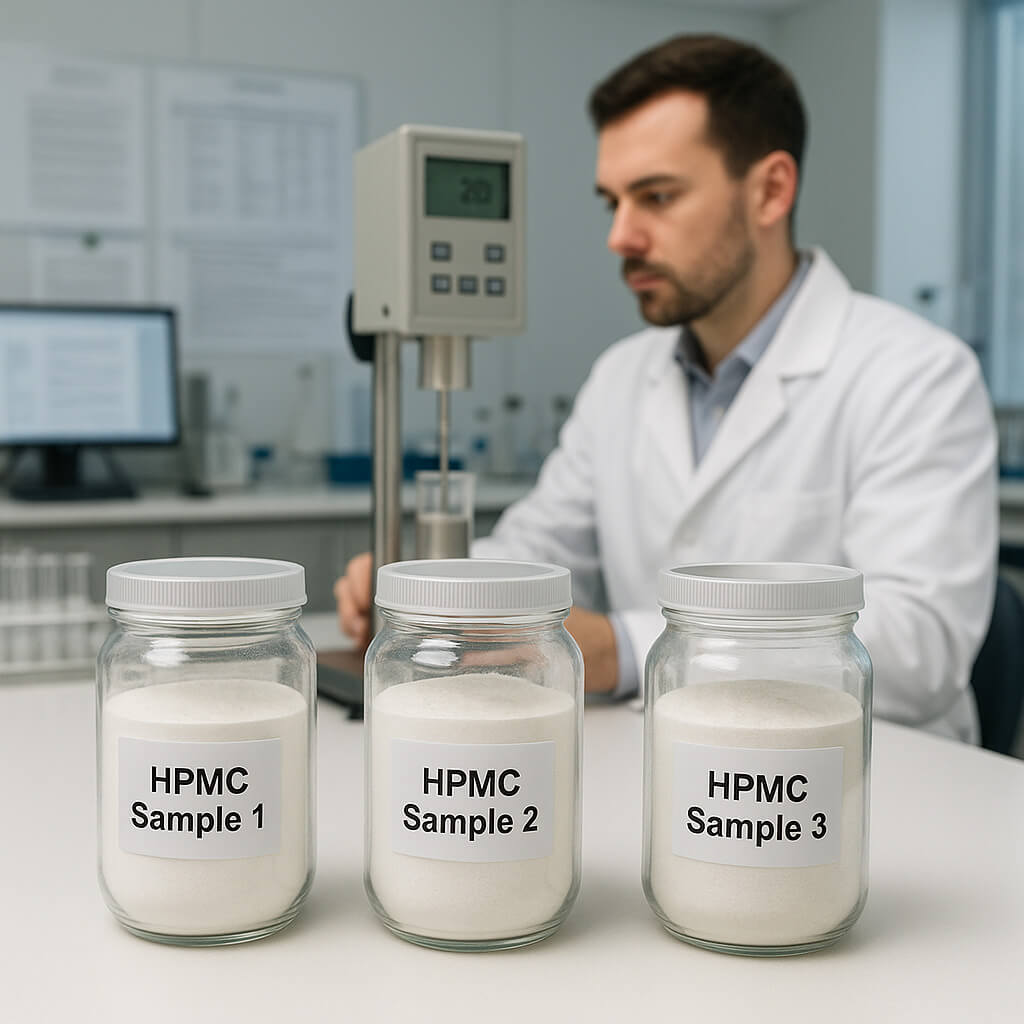Hydroxypropyl Methylcellulose, or HPMC, serves as a crucial ingredient across many industries, including construction, pharmaceuticals, and food production. But here’s the kicker: not all HPMC products are the same. The different grades of HPMC can drastically affect the performance and quality of your final product. Understanding these grades helps purchasing managers and industry professionals make smarter decisions. This article will unpack the key types of HPMC grades, explain their differences, and provide practical insights for selecting the best fit for your application. By the end, you’ll know exactly how to match the right grade to your needs and avoid costly mistakes.

1. ¿Qué es la hidroxipropilmetilcelulosa (HPMC)?
Hydroxypropyl Methylcellulose (HPMC) is a cellulose ether derived from plant-based cellulose, widely used as a thickener, binder, and film former. It’s valued for its versatility across sectors such as construction (dry mortars, adhesives), pharmaceuticals (tablet coatings, controlled-release agents), and food (stabilizers, emulsifiers). But what sets HPMC apart? Its ability to modify viscosity, solubility, and chemical stability.
Ready for the good part? Understanding HPMC’s basic properties is the first step to knowing how different grades influence outcomes. For instance, HPMC dissolves in cold water to form a gel-like solution, which impacts how it binds or thickens formulations. Its non-ionic nature means it remains stable in various pH ranges and ionic strengths, making it a reliable additive.
Case in point: In construction, HPMC enhances mortar adhesion and water retention. In pharmaceuticals, it controls drug release rates. In food, it stabilizes textures and improves shelf life. Each application demands specific HPMC characteristics, which depend on the grade used.
Manufacturers classify HPMC by viscosity, substitution degree, and molecular weight. These factors affect how it behaves under different conditions. For example, higher viscosity grades create thicker gels, useful in adhesives, while lower viscosities suit coatings needing smooth flow.
| Propiedad | Descripción | Usos típicos |
|---|---|---|
| Viscosidad | Thickness of solution formed | Adhesives, mortars |
| Grado de sustitución | Chemical modification level of cellulose | Stability, solubility |
| Peso molecular | Size of polymer chains | Film strength, binding ability |
This basic understanding sets the foundation for exploring the various grades and their specific roles in your products.
2. How Are HPMC Grades Classified?
HPMC grades are categorized primarily by viscosity, substitution degree, and application-specific standards. But what’s the real story behind these classifications? Manufacturers use these parameters to tailor HPMC performance to industry needs.
Viscosity, measured in millipascal seconds (mPa·s), indicates how thick the HPMC solution will be. Grades range from very low viscosity (around 3,000 mPa·s) to very high (over 100,000 mPa·s). High-viscosity grades produce thicker gels, ideal for adhesives requiring strong bonding. Low-viscosity variants work well in coatings or pharmaceuticals needing smooth flow and easy processing.
The substitution degree refers to how many hydroxyl groups on cellulose are replaced by methyl or hydroxypropyl groups. This influences water solubility, film-forming ability, and chemical resistance. Different industries require specific substitution levels to ensure compatibility and stability in their formulations.
Industry standards like USP (United States Pharmacopeia), EP (European Pharmacopoeia), and JP (Japanese Pharmacopoeia) regulate grade quality, ensuring safety and consistency. For example, pharmaceutical-grade HPMC must meet strict purity and performance tests, while construction-grade focuses more on mechanical properties.
But here’s where it gets interesting: some suppliers offer customized grades tailored to specific customer requirements, adjusting viscosity and substitution levels. This flexibility can be a game-changer for B2B buyers needing unique performance characteristics.
| Parámetro de clasificación | Range/Type | Enfoque de la industria |
|---|---|---|
| Viscosidad | 3,000 – 100,000+ mPa·s | Construcción, farmacéutica, alimentación |
| Grado de sustitución | Low, medium, high | Solubility, stability control |
| Standards | USP, EP, JP | Cumplimiento normativo |
Knowing these classifications allows professionals to make informed decisions, optimizing product performance and cost.
3. What Are the Key Differences Between HPMC Grades?
The key differences among HPMC grades revolve around viscosity, substitution degree, and solubility. You might be wondering why these factors matter so much. Here’s the answer: each property affects how HPMC performs in different environments and applications.
Viscosity determines how thick the HPMC solution becomes when dissolved in water. For example, a high-viscosity HPMC can retain water longer in cement mixes, improving workability and adhesion. On the other hand, lower viscosity grades are favored in pharmaceuticals where quick dissolution is necessary.
Substitution degree affects chemical interactions. Higher substitution means greater water solubility and better film formation, which is essential for tablet coatings in pharma. Lower substitution grades tend to be less soluble but offer higher mechanical strength, useful in construction materials.
Solubility varies widely; some grades dissolve instantly in cold water, while others require higher temperatures. This impacts processing conditions and final product texture. Food industry formulators may choose grades that create smooth gels without lumps, enhancing product consistency.
For example, in tile adhesives, a medium-viscosity, medium-substitution grade might balance adhesion and flexibility. In contrast, controlled-release pharmaceuticals might demand a high-substitution, medium-viscosity grade for precise drug delivery.
| Grade Property | Low Grade | Medium Grade | High Grade |
|---|---|---|---|
| Viscosidad | 3.000–10.000 mPa·s | 10,000–50,000 mPa·s | 50,000+ mPa·s |
| Grado de sustitución | Bajo | Medio | Alto |
| Solubilidad | Lento | Moderado | Rápido |
This comparison helps identify the best grade for your production needs and avoids costly errors.
4. How Does Viscosity Affect HPMC Performance?
Viscosity is a critical parameter that controls how HPMC behaves in different applications. This is where it gets interesting. In construction, high-viscosity HPMC improves water retention in dry mortars, making them easier to work with and less prone to cracking. It also enhances adhesion to substrates, crucial for tile adhesives.
In pharmaceuticals, viscosity influences tablet coating thickness and drug release rates. A higher viscosity grade can slow dissolution, allowing controlled release of active ingredients. Meanwhile, food manufacturers rely on specific viscosities to stabilize emulsions or thicken sauces without affecting taste.
For example, a dry mortar manufacturer might select a high-viscosity HPMC grade with 30,000–50,000 mPa·s for optimal water retention and workability. A pharma company producing sustained-release tablets may choose a mid-range viscosity for balanced coating properties.
Choosing the right viscosity grade involves balancing processing ease with end-product performance. Using too low viscosity can cause poor water retention, while too high can lead to processing difficulties such as clogging or uneven mixing.
| Solicitud | Preferred Viscosity Range (mPa·s) | Beneficio clave |
|---|---|---|
| Mortero seco | 30,000–50,000 | Water retention and adhesion |
| Productos farmacéuticos | 10,000–30,000 | Liberación controlada de fármacos |
| Industria alimentaria | 3,000–20,000 | Textura y estabilidad |
Selecting the appropriate viscosity grade ensures product quality and production efficiency.
5. What Is the Importance of Substitution Degree in HPMC?
Substitution degree defines how many hydroxyl groups on the cellulose backbone have been replaced by hydroxypropyl or methyl groups. But here’s the kicker: this subtle chemical difference significantly influences HPMC’s solubility, thermal stability, and interaction with other ingredients.
Higher substitution degrees increase water solubility and improve film-forming properties. This makes high-substitution HPMC ideal for pharmaceutical coatings or food products requiring smooth, stable textures. Conversely, low-substitution grades tend to resist dissolution better and offer stronger mechanical properties, which benefits construction materials exposed to harsh environments.
For example, pharmaceutical tablet coatings often use high substitution degree HPMC to achieve consistent drug release profiles. Meanwhile, dry mortar formulations rely on lower substitution degrees to maintain structure under variable moisture and temperature.
Thermal stability also ties to substitution degree. High substitution grades withstand higher processing temperatures without degradation, which is critical for applications involving heat.
| Grado de sustitución | Solubilidad en agua | Estabilidad térmica | Typical Application |
|---|---|---|---|
| Bajo | Bajo | Moderado | Materiales de construcción |
| Medio | Moderado | Bien | General industrial uses |
| Alto | Alto | Alto | Productos farmacéuticos, alimentos |
Understanding substitution degree allows manufacturers and buyers to fine-tune formulations and optimize performance for their specific needs.
6. How Do Different HPMC Grades Influence Product Quality?
Product quality depends heavily on selecting the right HPMC grade. What’s the real story here? In construction, the proper grade improves adhesion, flexibility, and durability of mortars and adhesives. For instance, a tile adhesive containing a medium-viscosity HPMC can better resist cracking and moisture damage.
In pharmaceuticals, grades affect drug stability, release rate, and tablet integrity. A high-grade HPMC with high substitution ensures consistent coating thickness and protects active ingredients from degradation.
Food products also benefit from specific grades, which stabilize emulsions and maintain texture over shelf life. For example, plant-based yogurts may use a particular HPMC grade to improve creaminess without altering flavor.
Poor grade selection can lead to product failures such as cracking in mortars, uneven drug release, or separation in food items, causing costly recalls and reputational damage.
| Industria | Key Product Benefit | Impact of Wrong Grade |
|---|---|---|
| Construcción | Adherencia, retención de agua | Cracking, weak bonding |
| Productos farmacéuticos | Coating uniformity, release | Uneven dosage, instability |
| Alimento | Textura, vida útil | Separation, poor mouthfeel |
Choosing the right HPMC grade enhances product reliability and customer satisfaction, ultimately protecting your business.
7. What Testing Methods Ensure HPMC Grade Consistency?
Quality control is vital in maintaining consistent HPMC performance. Ready for the good part? Testing focuses on verifying viscosity, purity, substitution degree, and microbial limits.
Viscosity tests use viscometers to measure solution thickness under standard conditions. Any deviation from specifications can affect processing and product quality. Chemical analysis ensures substitution degrees meet targeted ranges using techniques like FTIR or NMR spectroscopy.
Microbial tests confirm that HPMC is free from harmful contamination, essential in pharmaceutical and food applications. Compliance with international standards such as USP, EP, and JP requires rigorous documentation and batch testing.
Additionally, suppliers may conduct moisture content and ash value tests to assess raw material quality. Regular audits and on-site inspections help ensure consistent production.
| Tipo de prueba | Objetivo | Industry Importance |
|---|---|---|
| Viscosidad | Consistency of solution thickness | Todas las industrias |
| Análisis químico | Confirm substitution degree | Farmacia, alimentos |
| Microbial Testing | Safety and purity | Farmacia, alimentos |
| Contenido de humedad | Raw material quality | Construcción |
| Ash Value | Inorganic residue check | Construcción |
Employing these tests guarantees the HPMC you receive matches performance expectations, reducing production risks.
8. How to Select the Right HPMC Grade for Your Industry?
Choosing the right HPMC grade can be tricky but critical. Here’s where it gets interesting. Start by identifying your product’s requirements—whether you need high viscosity for water retention, rapid dissolution for coatings, or thermal stability for processing.
Consider the cost-to-performance ratio. Higher grades often cost more but provide better reliability and performance. For example, a pharma company might invest in pharmaceutical-grade HPMC to meet regulatory demands, while a construction firm might choose a cost-effective grade with acceptable properties.
Working closely with suppliers is key. Request samples for trial batches to test performance under your manufacturing conditions. This helps avoid surprises during scale-up.
Case study: A manufacturer of dry mortar switched from a low-viscosity grade to a medium-viscosity grade after trials showed improved adhesion and reduced cracking, resulting in higher customer satisfaction.
| Industria | Key Selection Criteria | Enfoque recomendado |
|---|---|---|
| Construcción | Viscosity, cost, water retention | Trial batches and supplier talks |
| Productos farmacéuticos | Purity, substitution, regulatory | Certified pharma-grade |
| Alimento | Solubility, texture, safety | Food-grade, trial samples |
A methodical selection process reduces risks and ensures you get the right HPMC grade for your needs.
9. What Are the Challenges When Switching HPMC Grades?
Switching HPMC grades isn’t always straightforward. What’s the real story? Changes in viscosity or substitution degree can affect processing times, mixing behavior, and final product properties.
For example, using a higher viscosity grade might slow mixing or require equipment adjustments. In pharmaceuticals, different grades may alter drug release profiles, requiring reformulation and stability testing.
Trial runs and pilot testing are essential to mitigate risks. Adjusting manufacturing parameters, such as water addition or mixing speed, often helps accommodate new grades.
Risk management includes keeping open communication with suppliers for technical support. Planning longer lead times for testing and approval also helps avoid production delays.
| Desafío | Causa | Mitigation Strategy |
|---|---|---|
| Processing delays | Different viscosity | Pilot trials and equipment tuning |
| Product inconsistency | Substitution changes | Reformulation and stability tests |
| Increased costs | Testing and adjustments | Supplier support and planning |
Understanding these challenges upfront helps companies transition smoothly without compromising quality.
10. How Can Customized HPMC Grades Benefit Your Business?
Customization offers tailored viscosity, substitution degree, and dissolution rates to meet unique application needs. Ready for the good part? This flexibility allows manufacturers to differentiate products and improve performance.
For instance, a pharmaceutical firm might require a slow-dissolving grade for controlled drug release, while a construction client needs a grade optimized for extreme weather resistance. Custom HPMC grades make these specialized requirements possible.
Working closely with manufacturers enables adjustments in production processes and raw materials to meet specifications. This partnership fosters innovation and competitive advantage.
Additionally, customization can reduce costs by eliminating unnecessary properties or enhancing critical ones. It also supports compliance with regional regulatory requirements by adjusting chemical composition.
| Beneficio | Descripción | Impacto empresarial |
|---|---|---|
| Tailored Performance | Meets exact application needs | Better product quality |
| Cost Optimization | Removes unwanted features | Lower production expenses |
| Cumplimiento normativo | Meets local standards | Smoother market entry |
Custom HPMC grades empower businesses to meet precise customer demands, enhancing satisfaction and market position.
Preguntas frecuentes
Q1: What is Hydroxypropyl Methylcellulose (HPMC)?
HPMC is a cellulose ether used as a thickener, binder, and stabilizer across construction, pharmaceuticals, and food industries due to its solubility and film-forming properties.
Q2: How are different HPMC grades determined?
Grades vary mainly by viscosity, substitution degree, and solubility, which affect suitability for specific applications like mortars, coatings, or drug delivery.
Q3: Why is viscosity important in HPMC selection?
Viscosity controls solution thickness impacting water retention, adhesion, and drug release, making it critical for product performance across industries.
Q4: Can HPMC grades be customized?
Yes, manufacturers can modify viscosity, dissolution speed, and substitution degree to meet unique application requirements.
Q5: How do I ensure consistent quality in HPMC products?
Ensure suppliers comply with international standards and conduct thorough quality control tests including viscosity, chemical composition, and microbial purity before delivery.




